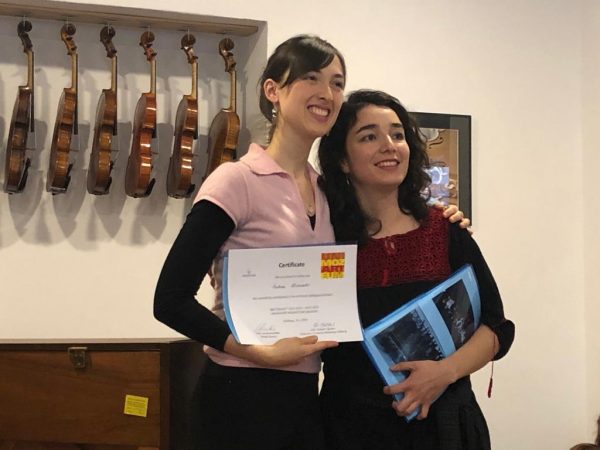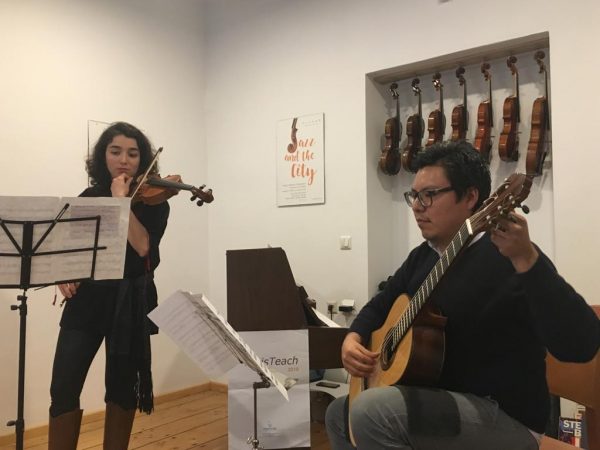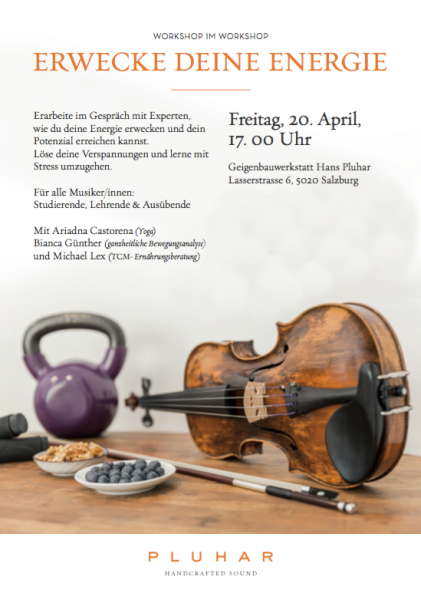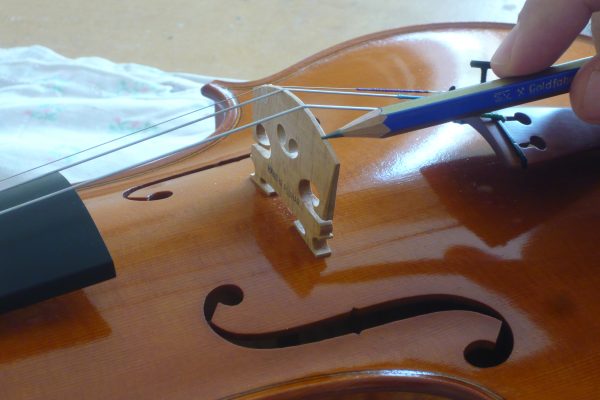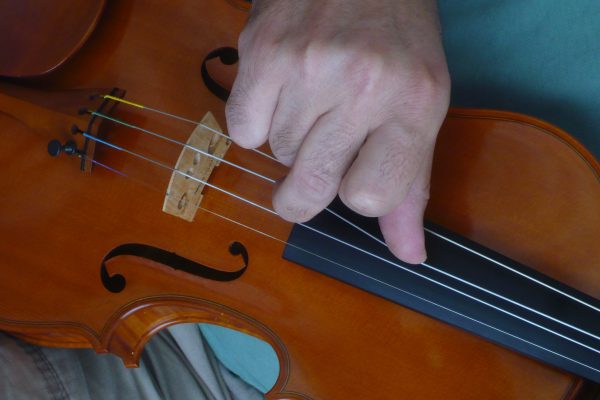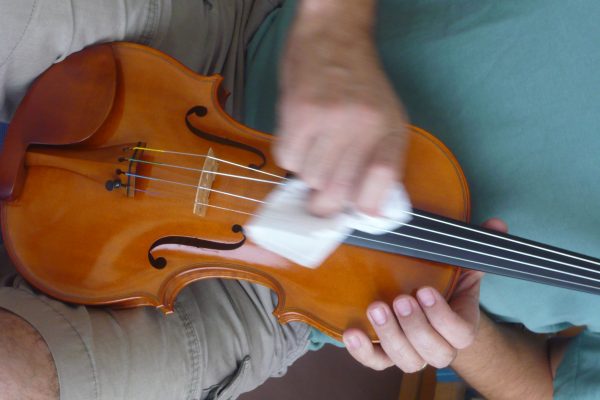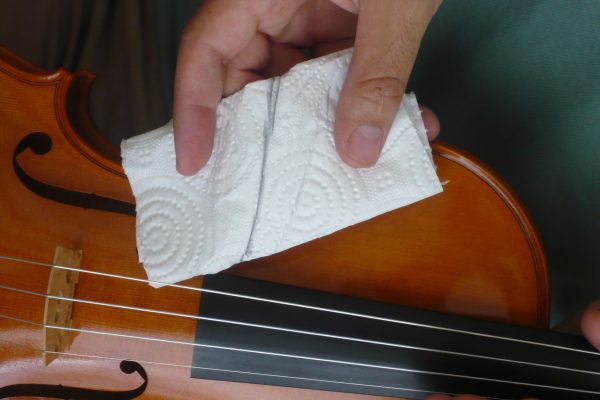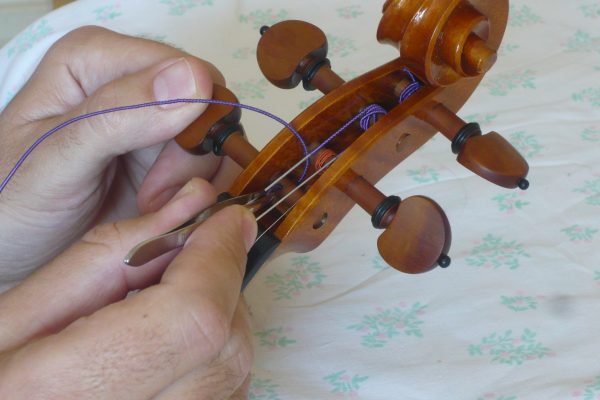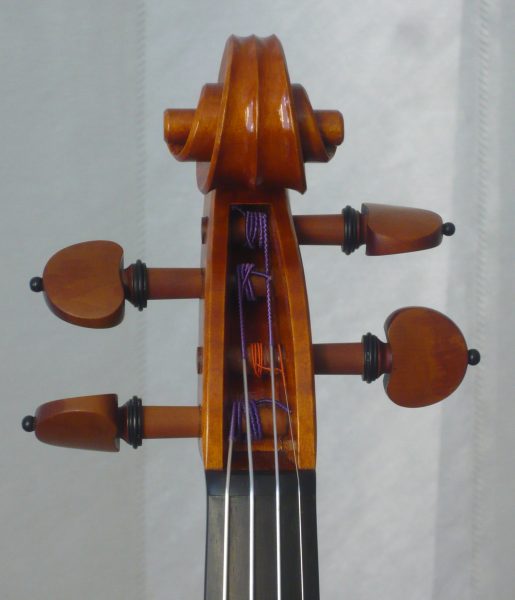Pluhar violin atelier adds more “Beauty of Sound” to Salzburg’s musical life
“Beauty of sound and charm that enchants.” These are the qualities that Hans Pluhar considers critically important when he makes a new violin. The 44-year-old, born in Boston and raised in Graz, moved to the City of Mozart three years ago. Pluhar feels that relocating his profession to Salzburg draws upon the city’s compelling artistic network and cultural ambience that largely centers around the Salzburger Festspiele and the city’s plethora of concerts: “My violins have brought me here” he told the APA.
With a charming chamber music soirée on June 10th, the violin maker will open his new workshop at Lasserstraße 6 in the center of Salzburg, within walking distance of the Mozarteum. Pluhar started creating both violins and violas 25 years ago in a peripatetic atelier that has resided in several different cities. One of the models he strives to emulate is the famous “Dushkin” with its powerful sound capacity, made by 18th century Italian violin maker Giuseppe Guarneri del Gesu. Pluhar got a chance to play it on the occasion of meeting the Israeli violin virtuoso and conductor Pinchas Zukerman, who owns that instrument. “I was allowed to play it and I got its measurements from my colleagues,” Pluhar revealed. “This violin has inspired me with its beauty. Zukerman is coming to Salzburg in September. I want him to try out my violin.”
The opinion of a world-renown musician such as Zukerman is beneficial to Pluhar’s professional development. In the previous year, an orchestra member of the Vienna Philharmonic was enthusiastic about buying a Pluhar violin, which was built with a Stradivarius template. “Afterwards he told me that he had been looking for a sound like this all his life,” said Pluhar.
Sensitivity and patience are for Pluhar the most important qualities needed for this profession. “Patience and musicality are my strengths,” he explains. As a musician himself, Pluhar, when he speaks of his violins, is able to demystify the nature of his work. He studied violin and viola, as well as chamber and orchestral music, at the Conservatory in Graz. At the beginning of the 1990s he visited the Violin Making School of America in Salt Lake City (USA). He spent his apprenticeship and journeyman years in Krems on the Danube, and in London, where he worked as a restorer and became self-employed in the year 2000 as a violin maker, concentrating on producing new instruments. In 2011 he was awarded the trade license for stringed instrument producers in Graz.
Salzburg is an ideal location for both the business and private life for Pluhar. “Mozart and the Salzburger Festspiele center is known all over the world and has great significance for international marketing.” A violin maker can cultivate many professional contacts with artists here. This city also offers a high quality of life for a young family, said the married father of a seven-year-old son. His wife Gül Ersoy Pluhar has numerous employment possibilities as a freelance violist in Salzburg. She is currently a substitute in the viola section of the Camerata Salzburg and the Mozarteum orchestras, and also maintains her professional career in Istanbul on a part-time basis.
Not surprisingly, Pluhar’s violins are in demand. The Mozarteum University has purchased three concert violins to be used by talented students, one of whom has become a member of the Staatskapelle Dresden. Lukas Hagen, the first violinist of the Hagen Quartet, mediated the Mozarteum purchase, in addition to buying a “Pluhar” for himself ten years ago. “This was my first contact with Salzburg,” says the violin maker. The concertmaster of the London Philharmonic Orchestra, Pieter Schoeman, also opted for a “Pluhar.” Pluhar admits “Schoeman said he would never sell the violin. This is extremely motivating for me. ”
Pluhar has furnished his workshop lovingly and with artistic detail. “I’m passionate about my profession – so I really enjoy going to my workshop.” At the age of four, he was allowed to accompany his father, a doctor who sang avocationally in a choir, to that ensemble’s orchestra rehearsals. Fascinated by the violin, Pluhar imitated the movements of the musicians. The magic spell of the instrument manifested a compelling grip on him. When he was eight years old, his parents finally allowed him to fulfil his desire to learn the violin. Then, as a 15-year-old, he revealed to his violin teacher that instead of going to music, he would prefer to become a violin-maker. He has never regretted this decision. He also met his wife through his own viola: Both were living in London when their lives intertwined as “his” instrument became “theirs.”
Even after 25 years the construction of violins is still fascinating for Pluhar. “Technical precision and artistic expression are very much in demand in my profession. This is exhibited in the tenth of a millimeter range,” he explains. He builds two to three violins a year, the length of time it takes for a violin to be properly finished in addition to running the business. “Each instrument is unique and has a characteristic sound. Although the violin as such is already 450 years old and has not changed much in its form, every violin-maker can superimpose his own style on the instrument and its sound — his handwriting, so to speak.” Pluhar additionally offers repairs and expert diagnosis.
Pluhar uses spruce for the top of the violin, and maple for the back, the neck and the sides, the so called ribs. The sides are planed and scraped down to a thickness of only one millimeter. For the spruce it is important that it is only from trees that grow in the Alps at more than 1,000 meters above sea level. “Through the hard winters, the spruce grows slower,” he explains. “The wood has a lot of strength in the longitudinal direction and is extremely light, due to the faster growth in summer.” He also prepares the violin’s lacquer himself, from resins and linseed oil.
But as a 21st-century person, Hans Pluhar mixes tradition and technology: the computer can be used to determine the frequency, sound velocity and density of the wood. A specially developed software enables him to graphically display the instrument’s strengths in color charts. “This is absolutely necessary in order to achieve repeatable results,” he affirms. At the end of his construction work, Pluhar the violinist applies the bow to the strings in order to listen to the results and to get the feel of how it is to play on it. “I like a clear, strong tone which projects very well in a large hall and allows for a diversity of sounds.” The perfect acoustics of Pluhar’s atelier in the City of Mozart demonstrate to the listener, and to the violin maker himself, the quality of his very specialized work.
Interview by Austrian Press Agency (APA), translated and edited by Alexandra Ivanoff, May 2017
